Do Cartoons Use Archetypes to Reflect Society?
Do Stereotypes Enhance or Diminish Cartoon Quality?
Well, hello there! Today I came across an interesting blog by Annie Weatherwax about archetypes in relation to illustrations and cartoons. This piece grabbed my attention, given my own, previous blog on archetypes and, uh, well—I like to dabble with cartoons.
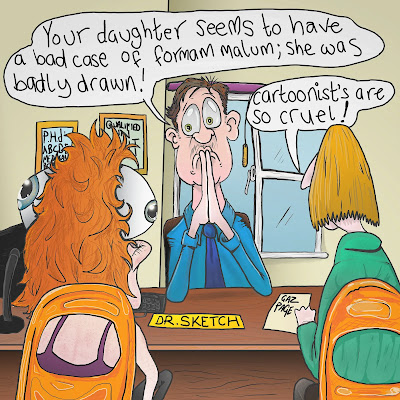
With regards to a lot of media, especially cartoons, creative people automatically use archetypes. If we get scientific about it, could we say archetyping has always been our natural way of nailing people down? Take the archetypal doting mother; it could only have been accepted as a 'thing' after people had spoken about the 'those types' of mothers who excessively nurture. We've been tokening archetypes over our history. I've probably missed something somewhere, but cartoons do play on them.
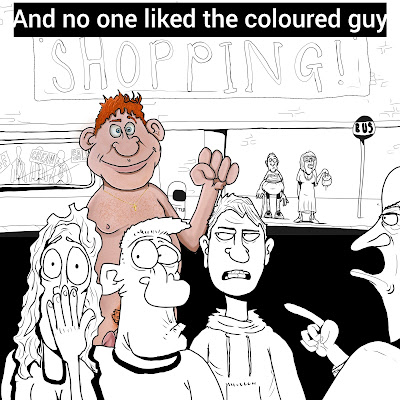
Why Are Archetypes Important in Cartoons?
Before a psychiatrist brands a patient with a mental condition, many of the DSM-V boxes will need ticking first. Cartoonist's draw up illustrations based on archetypes, and stereotypes. New archetypes have to be recognised, and then tokened as a 'human thing' before it goes viral, like with the modern 'Katen,' or those overly 'analytical atheist' types, for example. It's swings and roundabouts. Capturing the essence of people's behaviour.

What Makes a Compelling Character Relatable Beyond Their Archetype?
Hold on, uh, don't think I'm saying all cartoonists are mentally ill. A few of us are quite normal. I'm just saying there're other tantalizing things to incorporate into your work other than an archetypal model. I'll admit to gladly enjoying cheeky stereotypes and vulgarity when I do a cartoon. Parody is another word for it, according to the great Instagram. I might try a touch of satire, in all fairness, I only tend to do gag cartoons.

Understanding the Collective Unconscious in Art
Annie's blog explains Jungian prototypes very well, but I'm not of the initiated, I view what Jung called the 'collective unconscious' in a different way to how he did. I see the collective unconscious in the same light as I see human morality: without mystery; socially constructed and existing in the human mind and accepted as some inherent nature when it's not. Cross pollination of culture could also explain aspects of the collective unconcious, historically spreading deep symbolic themes and values across the world.
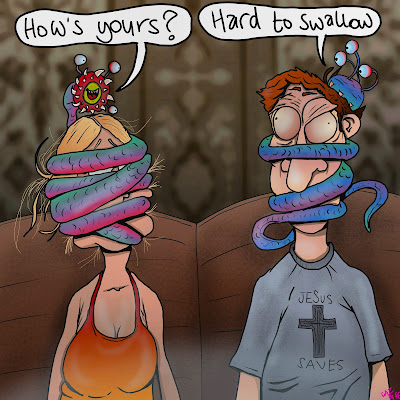
When I create a cartoon, I find amusement in emphasising societies common forms of ugliness, our dibshittery. I try to promote our lack of grace, the human screwball scramble. It can be a challenge to accurately turn my stupid mental imagery into an picture.

What Happens When You Create Art Without Archetypes?
My previous blog about archetypes agrees that they are exaggerated, but compelling characters that re-incarnate that punch of character inspiration. I posited the idea that we, as people, do the same. Almost every boy, years ago, wanted to be Han Solo. I saw many of them modify their behaviour to mirror that lovable rogue. Well, before Star Wars, those qualities were recognised by George Lucas in Errol Flynn, James Dean and Humphrey Bogart. They shaped Han Solo. My friends who practiced the Han Solo swagger, were unknowingly strutting like James Dean. Okay, so did I!
All that caricaturing; mannerisms, villainous squints, the intense stare, tough guy side glances, the put-on manly voice, all these idiosyncrasies that personify our character development aren't archetypes themselves. Wallace and Gromit wordlessly purvey inner thought very well. Wallace has many archetypes but his soul comes from how he carries them.
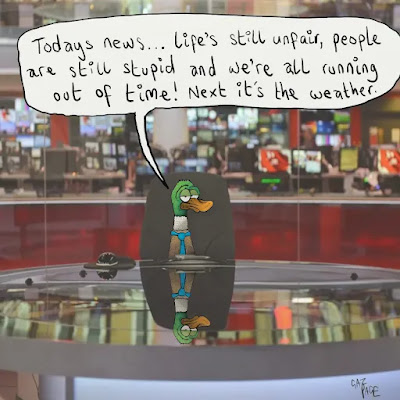
We enjoy artistic content when there is something that resonates with us, it's immersive. I believe artistry is not simply relatability alone or indeed, solely archetypes, but rather how they are brought to life. We gauge our environment going on how relatable things are for us. Wallace is a loveable waffling character: a genius inventor, typical English man, but only because it's how he is animated, designed, postured, voiced and facially expressed. This artistry is key above all else, but that's only my opinion.

For The Sake of Your Sanity I'll Stop!
I appeal to Caravaggio's powerful art. His work will grasp the viewer, because of that very realistic human physiology. Those composed scenes of drama and tragedy. His art is pure immersion, because he put meat on the bone, then gave it emotion. I like to try and do a stupid-ass version of that.
.jpg)
Most art based on humans naturally contains something archetypal, the challenge may be to try one without any archetype or stereotype, just to see how weird and wonderful your cartoons can be.
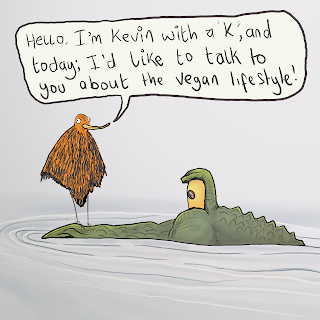




No comments:
Post a Comment
What are your thoughts?